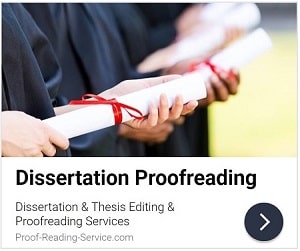Introduction
Writing a journal article requires more than just presenting research findings—it demands clarity, structure, and adherence to academic standards. A well-written journal article is concise, well-organized, and contributes new knowledge to its field.
Many researchers, especially early-career scholars, struggle with structuring their papers effectively. This guide provides practical tips on writing a strong journal article, from choosing a research topic to formatting and submission.
1. Understanding the Purpose of a Journal Article
A journal article serves multiple purposes:
- Communicating research findings to a wider academic audience.
- Contributing to knowledge by addressing gaps in existing literature.
- Building an academic reputation through peer-reviewed publication.
Each discipline has specific conventions, so it is essential to read past articles in your target journal to understand the expected format and style.
2. Choosing the Right Journal for Your Article
Before writing, select a journal that aligns with your research focus, target audience, and publication goals.
2.1. Factors to Consider When Choosing a Journal
- Scope and readership: Ensure your research aligns with the journal’s focus.
- Impact factor and reputation: High-impact journals reach a larger audience but may have stricter acceptance criteria.
- Open-access vs. subscription-based journals: Open-access journals provide wider accessibility, while subscription-based journals often have a higher reputation.
- Manuscript length and formatting requirements: Each journal has specific word limits and formatting rules.
Most journals provide detailed author guidelines on their websites—always review these before submission.
3. Structuring a Journal Article
A well-structured journal article typically follows the IMRAD format (Introduction, Methods, Results, and Discussion).
3.1. Title and Abstract
- Title: Should be clear, specific, and informative to attract readers.
- Abstract: A 150-300 word summary covering research objectives, methodology, key findings, and significance.
Example of a Strong Abstract:
This study examines the impact of online learning on student performance during the COVID-19 pandemic. Using a mixed-methods approach, data from 500 students were analyzed. Results indicate a significant correlation between digital engagement and academic success. Findings highlight the need for improved e-learning strategies.
3.2. Introduction
- Clearly define the research problem and its significance.
- Provide a brief literature review summarizing existing research.
- State the research objectives and hypothesis.
Tip: Keep the introduction concise and focused—it should provide enough background but not overwhelm the reader.
3.3. Methods Section
- Describe how the study was conducted (e.g., research design, sample size, data collection, analysis techniques).
- Ensure reproducibility by providing clear and detailed methods.
- Include ethical considerations (e.g., IRB approval, participant consent).
Example of a Methods Section:
A survey-based study was conducted among 500 university students from January to June 2022. Quantitative data were analyzed using SPSS, and qualitative responses were categorized thematically.
3.4. Results Section
- Present findings objectively without interpretation.
- Use tables, graphs, and figures to enhance clarity.
- Highlight statistical significance and key trends.
Tip: Label all figures clearly and provide detailed figure legends to explain data presentation.
3.5. Discussion Section
- Interpret findings in relation to existing literature.
- Address study limitations and suggest future research directions.
- Explain the broader implications of your findings.
Tip: Avoid repeating data—focus on analysis and interpretation instead.
3.6. Conclusion
- Summarize key takeaways from the research.
- Reinforce the significance and contribution of the study.
- Avoid introducing new information in the conclusion.
Example of a Strong Conclusion:
This study demonstrates that online learning significantly impacts student engagement and performance. Future research should explore long-term implications for digital education policies.
3.7. References and Citations
- Follow the required citation style (APA, MLA, Chicago, Harvard, etc.).
- Ensure all sources cited in the text appear in the reference list.
- Use reference management tools like Zotero, Mendeley, or EndNote.
Example of APA-Style Citation:
Smith, J. (2020). Online learning strategies for higher education. Oxford University Press.
4. Writing and Editing Tips for a High-Quality Article
4.1. Use Clear and Concise Language
- Avoid wordiness and complex jargon.
- Write in active voice whenever possible.
- Example: Instead of “A study was conducted to examine the effects,” write “This study examines the effects.”
4.2. Maintain Logical Flow Between Sections
- Use transition sentences to connect ideas smoothly.
- Ensure each section naturally leads to the next.
4.3. Follow the Journal’s Formatting Guidelines
- Adhere to font size, spacing, and citation format.
- Double-check the word count and structure before submission.
4.4. Revise and Proofread Thoroughly
- Review the manuscript multiple times for grammar, clarity, and coherence.
- Use tools like Grammarly, Hemingway Editor, or ProWritingAid to refine writing.
- Have peers or mentors review your article before submission.
5. Preparing for Submission
5.1. Writing a Strong Cover Letter
A cover letter should:
- Introduce your manuscript.
- Highlight its significance.
- Confirm originality and adherence to journal guidelines.
Example of a Cover Letter:
Dear [Editor’s Name],
I am pleased to submit my manuscript, “[Title of Paper]”, for consideration in [Journal Name]. This study explores [research focus] and contributes valuable insights to [field of study].
We confirm that this manuscript is original, has not been published elsewhere, and adheres to the journal’s submission guidelines.
We appreciate your time and consideration and look forward to your feedback.
Sincerely,
[Your Name]
5.2. Submitting Your Manuscript
- Double-check that all required documents (e.g., manuscript, cover letter, figures, and supplementary materials) are uploaded correctly.
- Follow the journal’s online submission process and confirm all metadata is accurate.
6. Handling Peer Review and Revisions
6.1. Responding to Reviewer Comments
- Address reviewer feedback professionally and thoroughly.
- Provide point-by-point responses to each comment.
Example of a Reviewer Response:
Reviewer Comment: The methodology section lacks clarity regarding the sample selection.
Response: We appreciate this feedback and have revised Section 3.1 to include detailed criteria for sample selection.
6.2. Making Necessary Revisions
- Focus on clarity, depth, and accuracy.
- If rejecting a suggestion, explain why with supporting evidence.
Conclusion
Writing a journal article requires strategic planning, clear writing, and careful revision. By following structured writing guidelines, adhering to journal requirements, and preparing for peer review, researchers can increase their chances of publication success.
Whether you’re a first-time author or an experienced researcher, implementing these tips will help you produce a high-quality, well-structured manuscript that contributes meaningfully to your field.
You might be interested in Services offered by Proof-Reading-Service.com
Journal Editing
Journal article editing services
PhD Thesis Editing
PhD thesis editing services
Expert Editing
Expert editing for all papers
Medical Editing
Medical Editing Services
Research Editing
Research paper editing services
Book Editing
Professional book editing services














